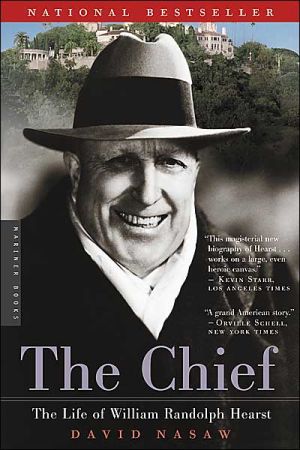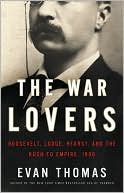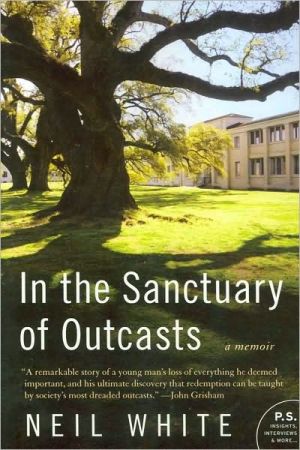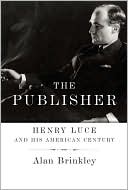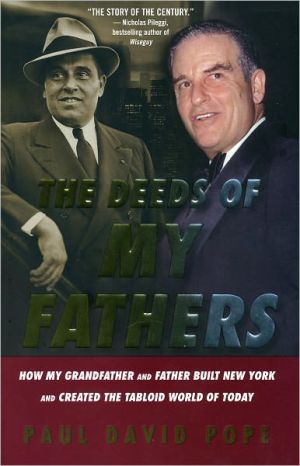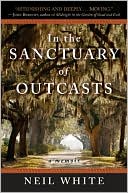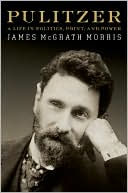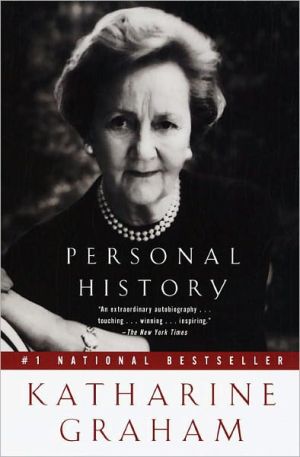The Chief: The Life of William Randolph Hearst
Named one of the best books of the year by the New York Times, the Los Angeles Times, the Washington Post, Business Week, and GQ, THE CHIEF: THE LIFE OF WILLIAM RANDLOPH HEARST is “an absorbing and ingeniously organized biography . . . of the most powerful publisher America has ever known” (New York Times Book Review). Drawing on papers and interviews that were previously unavailable, as well as on newly released documentation of interactions with such figures as Hitler, Mussolini, Churchill,...
Search in google:
Named one of the best books of the year by the New York Times, the Los Angeles Times, the Washington Post, Business Week, and GQ, THE CHIEF: THE LIFE OF WILLIAM RANDLOPH HEARST is “an absorbing and ingeniously organized biography . . . of the most powerful publisher America has ever known” (New York Times Book Review). Drawing on papers and interviews that were previously unavailable, as well as on newly released documentation of interactions with such figures as Hitler, Mussolini, Churchill, every president from Grover Cleveland to Franklin Roosevelt, and movie giants Louis B. Mayer, Jack Warner, and Irving Thalberg, David Nasaw completes the picture of this colossal American “engagingly, lucidly and fair-mindedly” (Arthur Schlesinger, Jr.). “Outstandingly researched, elegantly but not flamboyantly written, and fair in its conclusions about Hearst’s astonishing career” (Wall Street Journal), THE CHIEF “must be regarded as the definitive study . . . It’s hard to imagine a more complete rendering of Hearst’s life” (Business Week). BusinessWeek - Hardy Green This thoroughly researched volume must be regarded as the definitive life of the media mogul.
An Excerpt from The Chief\ Great Expectations\ One\ A Son of the West\ William Randolph Hearst did not speak often of his father. He preferred to think of himself as sui generis and self-created, which in many ways he was. Only in his late seventies, when he began writing a daily column in his newspapers, did he remind his readers -- and himself -- that he was the son of a pioneer. In a column about the song "Oh Susannah," which he claimed his father had sung to him, Hearst recounted the hardships George Hearst had endured on his thousand-mile trek from Missouri to California in 1850. There was a pride in the telling and in the story. His father had been one of the lucky ones, one of the stronger ones. While others had "died of cholera or were drowned by the floods or were killed by the Indians [or] tarried by the wayside under crude crosses and little hasty heaps of stone," his father had stayed the course, braved "the difficulties and dangers" and "at length...reached California in safety."\ The moral of the story was a simple one. Nothing had been given the Hearsts. There were no "silver spoons" in this family. They had scrapped and fought and suffered and, in the end, won what was rightfully theirs.\ William Randolph Hearst grew to manhood in the city of great expectations on the edge of the continent. He was a son of the West, or, more particularly, of Gold Rush San Francisco. The child and the city grew up together in the second half of the nineteenth century. San Francisco's population in 1870 was nearly three times what it had been in 1860. By 1880, San Francisco had a quarter of a million residents, was the ninth largest city in the nation and the premier metropolis of the West. The city's riches expanded even faster than its population. California's gold boom of the late 1840s and early 1850s had been followed by Nevada's silver boom in the early 1860s, and wherever riches were mined west of the Mississippi, they found their way into San Francisco. Money from the mines went into San Francisco's stock markets or real estate; it was deposited in its banks, and spent in its brothels, hotels, theaters, saloons, and gambling halls.\ With the constant influx of new people and capital, the city on the hills never had a chance to grow old. The Gold Rush mentality, permanently fixed in narrative form by storytellers, historians, and mythmaking adventurers, would dominate the culture and sensibility of San Franciscans for generations to come. There was gold in the hills -- and silver and the richest agricultural land the world had ever seen -- but that wealth did not sit on the surface ready for picking. It took sweat and savvy and years of labor to pull it up out of the earth.\ George Hearst was one of the tens of thousands of adventurers lured to California by the promise of gold. He had been born in 1820 or 1821 -- he wasn't quite sure when -- to a relatively prosperous Scotch -Irish family with American roots reaching back to the seventeenth century. George grew to manhood the only healthy son (he had a crippled brother and a younger sister) of the richest farmer in Meramec Township, Franklin County, Missouri. He was virtually unschooled, having acquired no more than a bit of arithmetic and the rudiments of literacy in classrooms.\ Franklin County, Missouri, was rich in copper and lead deposits. George's father, William Hearst, owned at least one mine and was friendly with a nearby group of French miners and smelters. On his trips to their camp, which he supplied with pork, Hearst was often accompanied by his son George. "I used to stay about there a good deal," George recalled later in life. "I naturally saw that they had a good deal of money. I think that that was what induced me to go into mining. Farming was such a slow way to make money. You could make a living at it and that was about all."\ William Hearst died when George was about twenty-two years of age. George took over the family farm, did some mining, for a time even ran a little store out on the public road, and then, as he recalls, "this fever broke out in California." Rumors of gold strikes near San Francisco had begun to drift east in the winter of 1848. In his December 1848 message to Congress, President James Polk confirmed that the stories, though "of such extraordinary character as would scarcely command belief, [had been] corroborated by authentic reports of officers in the public service." By January of 1849, every newspaper in the country was carrying front-page stories about the gold rush. "Poets, philosophers, lawyers, brokers, bankers, merchants, farmers, clergymen," reported the New York Herald on January 11, 1849, "all are feeling the impulse and are preparing to go and dig for gold and swell the number of adventurers to the new El Dorado."\ George Hearst read the newspapers and dissected the rumors. He almost went West in 1849, but was deterred -- temporarily -- by mining colleagues who warned him that there was nothing new in stories of Western gold. "Next year, however, I made up my mind sure to go.... I recollect talking over California with my mother. She did not like it at all, but when I told her they were making $40 and $50 a day there and that it seemed to me it was by far the best thing to do, as it was pretty hard pulling here, she said that if they were doing that, she had no doubts I would make something, too, and she agreed for me to go."\ In the spring of 1850, George Hearst left Missouri for California with a party of fifteen, including several of his cousins. His mother and sister rode with him for the first few days, said their final farewells, and turned back. He would be gone for ten years.\ Like many who traveled to the gold fields, George caught a case of cholera. He recovered with the help of "a little bit of brandy which I gave $16 a gallon for in St. Louis...and some pills which a man in St. Louis gave me." He was still shaking with fever when, in October, he crossed over the Sierra Nevada mountains through Carson Pass south of Lake Tahoe.\ By the time he reached California, the earliest strikes had been played out, the richest claims bought and registered. George Hearst and his companions spent their first California winter within miles of John Sutter's original strike on the American River. After months of shoveling wet gravel, living in leaky cabins, eating salt pork and beans, and finding little or no gold, they moved north to Grass Valley and Nevada City where a new lode had been discovered.\ There are two different ways to mine for gold. Placer miners look for it in riverbeds or streams, collect it in pans or sluices, wash away the sand, and sell the gold dust left behind. Quartz miners dig shafts into the ground in search of rock formations that have gold embedded in them. George Hearst arrived in the digging fields too late to cash in on the early placer mining bonanza. He had, however, invaluable experience in quartz mining. In Missouri, he had taught himself to read rock formations and, more importantly, to estimate the cost of bringing ore to the surface and refining it. Within a year of his arrival in the Grass Valley/Nevada City region, he was locating, buying, and selling claims in quartz mines.\ For the better part of the decade, George Hearst would remain in and around Nevada City. Although one of California's largest -- and most prosperous -- mining towns, Nevada City was little more than an extended miners' camp, with a primitive residential section, a few storefronts and churches, and dozens of saloons, brothels, and gambling halls. The vast majority of the town's residents were male, most of them newly arrived. Hearst prospered in this environment. He was at home at the poker table, the saloon, and probably the brothel as well. He was not among the town's merchant, mining, or professional elites, but after years of prospecting, buying, selling, and trading claims -- and for a time, running a general store -- he was making a decent living and building a reputation as a good judge of rock formations and a relatively honest businessman.\ In 1859, word reached Nevada City of a new strike in the Washoe district on the eastern ledge of the Sierra Nevada mountains, about 100 miles away. It was rumored that a group of placer miners had found an extraordinarily rich vein of gold mixed with heavy blue-black "stuff" on property owned by a crazy old miner named Henry Comstock. The first sample, secretly shipped across the mountains to Nevada City, had been found to be rich in silver as well as gold. A second sample was transported by mule over the mountains and assayed by Melville Atwood, a close friend and sometime partner of Hearst. It proved to be so rich in gold and silver that Atwood doubted the veracity of his tests. Though the Washoe district was a mule trip of four or five days, across the Sierra Nevada mountains, Atwood and Hearst with two other partners rode across the mountains to inspect the lode for themselves.\ By the time they arrived in the mining camp that would later be known as Virginia City, Nevada, the original claims had changed hands several times. The new owners, like the old ones, still had no idea of the value of their holdings. Hearst did. He contracted to buy as large a portion of the available claims as he could and then rode back across the mountains to raise funds to pay for them.\ Proceeding at a feverish pace, Hearst and his hired hands dug forty-five tons of ore out of the ground that spring of 1859, loaded it on pack mules, and trekked across the mountains to smelt and sell it in San Francisco. The ore appeared so worthless that it took days to find a smelter. But it was, as Hearst had believed, the "find" that every miner dreams of.\ While most of his colleagues in Virginia City had, in the first flush of excitement, sold their claims outright, Hearst not only held on to his, but poured every penny he earned back into his mines. He invested in new hoisting and pumping equipment, in underground timbering, and in a small private army of toughs to protect his property from claim bandits. By the spring of 1860, when the last obstacle to fortune was removed with the arrival of the U.S. Army and the defeat and removal of the local Paiute Indians, George Hearst was on his way to becoming a millionaire.\ After ten years in the digging fields, George Hearst returned to Missouri in the fall of 1860 to comfort his sick mother and display his newfound fortune. His mother died soon after his return, but George remained in Missouri for two more years, taking care of family business and looking for a wife.\ It was not uncommon for miners to marry late in life after they had made their fortunes. Hearst had already proposed to a woman in Virginia City, but been turned down by her family who considered him a poor match. He was forty years old -- much older than the women he courted, but he was in perfect health, which was rare for a miner, stood tall and straight, with a muscular build and a full blond beard.\ The woman he chose to court in Missouri was Phoebe Apperson, a schoolteacher twenty years his junior. Like George, she came from a Scotch-Irish family of small farmers with American roots stretching back over a hundred years. It is quite possible that Phoebe and George had known each other earlier -- though she had been only eight when he left Missouri for California. They were both from the same township and were in fact distantly related. Still, these similarities notwithstanding, they made a rather odd couple. Phoebe was small and delicate, with grayish blue eyes, fair skin, an oval face. She was a plain-looking woman but not unattractive, a Southern lady in bearing, and a church-going Presbyterian. George stood a foot taller and weighed twice what she did. He was uncouth, loud, and semiliterate, seldom changed his shirtfront, wore his beard long, bushy, and ragged at the edges, spit tobacco juice, liked nothing better for dinner than what he called hog and hominy, and had not seen the inside of a church in decades.\ Though, like her beau, Phoebe Hearst had begun her formal education in a one-room schoolhouse, she had actually graduated and gone on to a seminary in the next county. She had worked as a primary school teacher of factory children at the Meramec Ironworks in nearby Phelps County and as a tutor and governess in the home of a successful miner and smelter.\ The marriage took place in June 1862, in the midst of the Civil War. The couple had planned to leave at once for California, but because Missouri was a Union state, and George was not only not in the army but so outspoken a supporter of the Confederacy that he had already been jailed once for uttering seditious remarks about secession, it took him almost three months to get the "passport" he needed to cross the Union lines. Finally, in late September he and his now pregnant bride boarded a train for New York City, where they met a steamer bound for Panama. In early November 1862 they arrived in San Francisco and moved into a suite at the Lick House, the newest and most luxurious hotel in the city.\ In his absence, George's mines had been incorporated and stock offered on the San Francisco exchange established to handle the Comstock claims. Although a frenzy of silver speculation had driven share prices to astronomical heights and made Hearst a millionaire, the legal challenges to his claims had multiplied as rapidly as the price of his stocks. Mining law gave the owners of a claim property rights to the entire ledge of ore that branched out from it. But because only the courts could determine if bodies of ore at a distance from the original claim were pieces of it or separate lodes, Hearst, like every other mine owner in the Comstock, found himself embroiled in one suit after another.\ George Hearst could have remained with his wife in San Francisco while his associates ran his mines, his lawyers fought his legal battles, and the exchanges traded his mining stocks. But he chose not to. Within weeks of arriving in San Francisco, he sent and paid for Phoebe's parents to come west to be nearer their daughter, moved his bride of six months into new quarters in the Stevenson House, a hotel with accommodations for permanent guests, and left San Francisco for his mining camp across the mountains.\ Six months later, on April 29, 1863 -- with George still away -- Phoebe gave birth to William Randolph Hearst, a robust baby boy named for his deceased grandfathers. Sonny, as his absentee father referred to him, was doted on by his mother, his grandmother, and Eliza Pike, his Irish-Catholic wet nurse, who, according to Hearst's first biographer, worried so much about his immortal soul that she took him to be baptized.\ "'But Eliza,' protested the mother, 'I am a Presbyterian.'\ "'No matter, madam, the baby is a Christian.'"\ Soon after the birth, Phoebe, the baby, and Eliza Pike moved into a solid brick home on Rincon Hill. George remained hundreds of miles away, in a region of the West still not connected with San Francisco by railroad. Husband and wife communicated with letters hand-delivered across the mountains by George's business associates.\ For the next twenty years, George and Phoebe Hearst would be apart far more than they would be together. Both, if we can believe their letters, suffered from the arrangement, but Phoebe had the more difficult time, at least at first. George was at home in the West and had become accustomed to the predominantly male world of the mining camps. Phoebe was new to the West, new to city life, and a young mother -- she had been eight months shy of her twenty-first birthday when her son was born.\ Perhaps to compensate his wife for his absence, in the spring of 1864, as their son celebrated his first birthday, George bought Phoebe an elegant new home on Chestnut Street, north of Russian Hill, overlooking San Francisco Bay. With her husband hundreds of miles away and her parents preparing to depart for the new farm in Santa Clara which George had bought for them, Phoebe was left to make the move on her own. In early June, she sent Willie away with Eliza Pike to the baths at Santa Cruz so that she could devote her attention to the move.\ "It seems a month since you left," she wrote Eliza in mid-June. "I am terribly lonely, I miss Baby every minute. I think and dream about him. We all feel lost.... I have had another letter from Mr. Hearst...he expects to be home soon, but don't say what he means by soon, a week, or a month...Kiss Willie for me and write me how he is. I hope you will wean him.... I am going to telegraph Mr. Hearst to know what to do about moving up on the hill, we have only two weeks more. I don't think I can come down to see you I will be so very busy. Write often. I feel anxious to hear from you. Oh dear what am I going to do." Left on her own by her husband and by her parents who had moved south to their new farm, Phoebe adjusted to life as a single mother. She learned to make decisions by herself, run the household, and raise Willie. She was assisted of course by her husband's wealth, which provided her with a household filled with servants and the incentive and leisure to educate herself -- and her boy. She visited San Francisco's art museums, studied French, prepared herself for her first grand tour of Europe, and made the acquaintance of Bay Area artists and writers, inviting many of them to tea.\ Her major project was her son. As he grew up, she taught him to read and write and ride a horse. He became her escort and her cultural partner. Together they learned French, visited the museums, attended the operetta, and traveled up and down the California coast. All of this was communicated over the years in long, carefully handwritten letters to Eliza Pike, who by now had left the Hearst household but for years remained Phoebe's close friend.\ In the summer of 1865, Phoebe took her two-year-old son for an extended trip to visit her parents at Santa Clara, then to resort hotels in Santa Cruz and San Jose. Phoebe wrote Eliza Pike a long letter from San Jose:\ I have been out of town four weeks. We are having our house made much larger, it will be yet a month before it is finished. You know me well enough, to know that I will be glad to get home again, although I have been having a very nice time. The first week I was at Ma's...I enjoyed the drive over the mountains to Santa Cruz. The scenery is beautiful. I think it is a lovely place. I only stayed two days. The fare at the hotel was so wretched that I could not stand it, baby ate little or nothing, if we had not taken some chicken and crackers with us I don't know what the child would have done. I felt so uneasy about him for they have colera-morbus so badly in San Francisco and in fact everywhere that we hear of. I was so afraid he would take it, I thought it best for me to leave. I went to stay there three or four weeks, the place is crowded with people from the City...You will wonder where Mr. Hearst is all this time. He has been on several little trips and the rest of the time in the City. He did not go to Santa Cruz but comes to see us once a week when he is in the City. I am very well this summer. Willie keeps well and fat though he grows tall. He is as brown as a berry and so active and mischievous, he is a very good boy -- you have no idea how much he talks. You would be astonished. He seems to understand everything. He often talks of you. He likes his books so much. Can tell you about Cocky Locky and Henny Penny, knows more of Mother Goose than ever...Before I came away we had been going out a great deal, there was a splendid operetta troupe at the Academy of Music. We went six or eight nights (not in succession), saw the best operas. I enjoyed it very much.... I think we will go to the Sandwich Islands [Hawaii] sometime. It must be a delightful climate, but you know how foolish I am about leaving Mr. Hearst.... I have been doing splendidly in French, am sorry to lose all this time being away, but I read some every day so as to not forget. I have just finished a French novel which was very interesting. Willie knows several words in French. He is so cunning...Accept my love and wishes for your success and happiness and a great many kisses from Willie, if he could see you, he would have marvelous things to tell you. He is such a chatterbox.\ With the departure of Eliza Pike, the only person besides her parents whom Phoebe trusted entirely with her son, Phoebe assumed full-time care of the boy. Willie responded to his mother's attention as children often do: by being absolutely charming, like a puppy wagging his tail. He learned his letters, showered his mother with kisses, and grew jealous of the time she spent with her brother Elbert, who had joined the rest of the family in California. Willie -- or Billy Buster, as his father had taken to calling him now -- was a handsome boy, tall for his age, with light brown, almost blond hair, and clear blue eyes. Though he seldom saw his father, he quickly adjusted to life in a household filled with women -- family, friends, and servants -- all of whom participated in superintending his childhood. Their new home on Chestnut Street was located on top of an embankment that looked down on the Bay. Willie grew up in the sunshine, surrounded by lots of land, pets, and a beautiful hanging garden. From a distance, it seemed to be an idyllic childhood and as an adult William Randolph Hearst would describe it as such to his chosen biographer, Cora Older. But there were tensions, most of them having to do with George's extended absences and his enveloping financial problems.\ Like most miners, even the most successful, George Hearst's fortunes fluctuated wildly. Since it was virtually impossible to determine accurately where one claim ended and another began, mining entrepreneurs could spend half their lives -- and hundreds of thousands of dollars in the courts -- protecting their claims, bribing judges, hiring experts, and keeping armies of lawyers on retainer. Claim dispute cases took years to come to judgment -- and until they did, it was difficult, if not impossible, to raise money by selling stock.\ As a mining entrepreneur, George made his money not from getting ore out of the ground, but from buying and selling stock in mines. This all took capital -- and connections to capital. When silver prices were high, he had no difficulty raising money to finance new ventures and pay off his old debts. But when prices fell, as they inevitably did, opportunities vanished and debts accumulated. George was a gambler, firmly convinced that in the long run everything would come out all right. He refused to plan with any other outcome in mind.\ In the middle 1860s, he extended his investments -- and his debts -- from mines and mining stock to real estate. He bought commercial real estate in San Francisco in anticipation of the completion of the transcontinental railroad and purchased, for $30,000, forty thousand acres of ranch land two hundred miles to the south, near San Simeon Bay in the Santa Lucia Mountains. The land was in a coastal region rich with mineral deposits. It was also valuable for agriculture.\ In 1865, George Hearst was in his mid-forties, past the age when most successful miners return to civilization to enjoy the fruits of their labor. In the fall, he returned to San Francisco to accept the Democratic nomination for the state assembly. He had a young wife, a young son, sufficient business dealings and court cases in San Francisco to keep him busy, and close ties to the local Democratic party clubs which he had been supporting for several years. It is unlikely that he had intended to retire from mining entirely. The state legislature was in session only a few months a year, which left him with long stretches of time to return to the digging fields.\ The Democratic party in 1865 was in the midst of a revival brought about by the arrival of large numbers of German and Irish immigrants and Southerners from border states like Missouri who, like Hearst, were Democrats and opposed the Civil War. It was their votes that elected George Hearst in November.\ Though Sacramento, the state capital, was closer to San Francisco than the digging fields of Nevada and Idaho, Phoebe and George still lived apart most of the time. "Mr. Hearst is at home now," Phoebe confided to her diary on New Year's Day, 1866, but "he will return to Sacramento on Wednesday. I will be lonely again. He is absent so much.... Times are hard. My husband has lost a great deal of money lately. He is feeling low spirited and I feel like encouraging all I possibly can. This is the beginning of a new year. May God help me to do my duty in all things."\ When George was unable to come home to San Francisco for the weekend -- which was most of the time -- Phoebe and Willie were left with no choice but to take the overnight steamer to Sacramento. They stayed with George at the Brannan House on Front and J Streets. "He misses his big playroom and many toys," Phoebe wrote in her diary on January 9. She was every bit as miserable as Willie in Sacramento. She felt out of place among the politicians' wives and lost in the whirl of social events. She was also worried about her "perfect" son's increasingly imperfect behavior.\ On January 4, Willie, almost three years old now, had put castor oil on her handsome moiré antique dress "so I had to dress twice." On January 10, when Governor Stanford's wife and her sister came calling, he misbehaved again. On February 11, he was "very full of mischief and I always feel anxious for fear he will act badly and disturb someone." On February 15, he misbehaved so badly that she had to remove him from the table. On February 16, back home again, she confided to her diary that she was no longer "comfortable anywhere else. When Willie is with more children he is so much harder to control."\ Many years later, Phoebe would confess to her grandson, Bill Hearst, Jr. that his father hadn't been "easy to discipline" as a child. "His forte was an irrepressible imagination."\ In adulthood, Hearst would take pride in his boyish misbehavior. In 1941, at the age of 78, he devoted several of his "In the News" columns to stories of childhood pranks -- setting his room on fire, hurling a cobblestone through his dancing instructor's window, tying a string tight around the tail of a neighbor's cat, shooting at pigeons out of a hotel window with a toy cannon loaded with real gunpowder. Though he wrote these articles to recapture a lost childhood and to show his readers that he was much more of a "regular" guy than the tyrant and tycoon he had been portrayed as for half a century, what is most striking is that each of these vignettes tells the same tale of a small boy trying desperately to call attention to himself.\ In one of the stories, little Willie sets off fireworks in his bedroom after the grownups have gone to bed. "Then he opened the door and shrieked down the silent halls of the sleeping house: 'Fire! Fire! Fire!' Then he shut the door, locked it and awaited events." As smoke filled the hallway, his parents tried to break down the door to his room, while the cook called firemen who pried open his window and "turned the hose on Willie and his fireworks." The story ends with Willie being "warmed" good-naturedly by his father. "But, with all his pretense of severity, Willie's pap never did warm Willie as he deserved. If he had done so Willie might have grown up to be a better -- columnist." What comes across is the story of a little boy trying to establish some connection with his parents. The joke at the end covers the child's astonishment -- and perhaps disappointment -- at not being severely reprimanded and thereby taken seriously.\ In another column on youth and child-rearing, Hearst cited a Professor Shaler who "once told his class at Harvard that he did not mind boys being bad as long as they were not wicked." Hearst concluded with a veiled retroactive explanation of his childhood misbehavior. "Sometimes boys are bad just because they do not want to be considered sissies."\ Did Willie worry, as a child, that he was a sissy? Probably. It must not have been easy living up to the image of his tobacco-chewing, millionaire miner father. Though Willie was big and, despite Phoebe's constant worries, healthy, he was neither athletic nor particularly rugged. When Willie's father questioned whether the small private school he attended was doing him any good and suggested that he might instead go to the public schools, Phoebe asked if the public schools were not "rather rough-and-tumble for a delicate child like Willie?"\ "'I do not see anything particularly delicate about Willie,' replied Willie's father...'If the public schools are rough-and-tumble they will do him good. So is the world rough-and-tumble. Willie might as well learn to face it.'"\ Before ending this particular story, Hearst paused to correct his mother's characterization. "Willie was not delicate at all, but he was something of a 'mother's boy' -- and has always been mighty glad of it."\ What are we to make of these stories? They are a strange amalgam of apology and pride, a plea for understanding combined with an arrogant self-defense. They are, as well, an attempt by an old man to make sense of his history by mythologizing his less than idyll.\ Excerpted by permission of Houghton Mifflin Company. Copyright © 2000 by David Nasaw.
AcknowledgmentsviiPrefacexiiiI.Great Expectations1.A Son of the West32.To Europe Again and on to Harvard233."Something Where I Could Make a Name"39II.Proprietor and Editor4.At the Examiner675."I Can't Do San Francisco Alone"826.Hearst in New York: "Staging a Spectacle"957."How Do You Like the Journal's War?"125III.Publisher, Politician, Candidate, and Congressman8.Representing the People1459."Candidate of a Class"16810."A Force to Be Reckoned With"18611.Man of Mystery20212.Party Leader21413.Hearst at Fifty: Some Calm Before the Storms227IV.Of War and Peace14."A War of Kings"24115."Hearst, Hylan, the Hohenzollerns, and the Habsburgs"260V.A Master Builder16.Building a Studio27717.Builder and Collector28718.Marion, Millicent, and the Movies30319.A Return to Normalcy31520.Another Last Hurrah328VI.The King and Queen of Hollywood21."Do You Know Miss Marion Davies, the Movie Actress?"33722.Family Man35123.Dream Houses36224.Businesses as Usual37725.A New Crusade: Europe39826.The Talkies and Marion409VII.The Depression27."Pretty Much Flattened Out"42328."An Incorrigible Optimist"43729.The Chief Chooses a President452VIII.New Deals and Raw Deals30.Hearst at Seventy46931.Hearst and Hitler48832.The Last Crusade500IX.The Fall33.The Fall52734."All Very Sad, But We Cannot Kick Now"54335.Citizen Kane56436.Old Age575Epilogue604Notes609Index657
\ From the Publisher"Nasaw's "The Chief" works on a large, even heroic, canvas and, thanks to Nasaw's exhaustive research, moves on a level of detail that would satisfy even Theodore Dreiser." The Los Angeles Times\ "[Nasaw] has given his biography an immediacy that almost makes the reader forget that the author . . . was not there as the story unfolded."—Orville Schell The New York Times\ "...the Hearst whom Nasaw portrays...is still the fascinating figure we've known for years: the self-absorbed genius equally addicted to power and possessions..." Publishers Weekly\ "...absorbing and sympathetic portrait of an American original, the first full-scale biography of the publishing giant and politician in nearly 40 years." The Chicago Tribune\ "In this exhaustively researched biography [Nasaw] has allowed us finally to understand . . . the father of the modern media conglomerate." The Chicago Tribune\ "Nasaw's judicious and comprehensive biography sensibly seeks to understand its subject, not to judge him." The New Yorker\ "Unlikely to be surpassed as the definitive study of its subject." The Wall Street Journal\ "A highly readable portrait of a fascinating individual." The San Francisco Chronicle\ "Nasaw keeps his subject human and believable, no easy task when writing about such a colorful and forceful man." The Seattle Times\ "The large and in-charge William Randolph Hearst's flirtations with Hitler, Mussolini, and Louis B. Mayer are documented in David Nasaw's utterly absorbing bio." Vanity Fair\ "The Chief is both an informative piece of scholarship and a pleasure to read." The San Diego Union-Tribune\ "Nasaw's intriguing study is a must-read." The Nation\ "A thoroughly researched volume that must be regarded as the definitive work...It's hard to imagine a more complete rendering of Hearst's life." Business Week\ "Mr. Nasaw makes Hearst a regular guy . . . and often likable or sympathetic, if far from a universal hero." The New York Times\ "...the best biography I read in 2000."—Jonathan Yardley The Washington Post\ \ \ \ \ \ Wall Street JournalThe Chief:The Life of William Randolph Hearst by David Nasaw is an outstandingly researched biography, elegantly but not flamboyantly written and fair in its conclusions about Hearst's astonishing career. It is unlikely to be surpassed as the definitive study of its subject. Mr. Nasaw takes no psychological liberties and leaves it to the reader to judge the ultimate effects upon Hearst of his distant father, who made his fortune in mining and prospecting. This book readably and exactly connects the legend to the facts.\ \ \ Hardy GreenThis thoroughly researched volume must be regarded as the definitive life of the media mogul. \ — BusinessWeek\ \ \ \ \ Publishers WeeklyIt has been 40 years since the last major Hearst biography--thus this new volume has inherent value in portraying anew the great forerunner of Rupert Murdoch and other modern-day media moguls. This long-winded tome, however, often bogs down in trivial details of Hearst's tangled personal and professional life. Nasaw (Going Out: The Rise and Fall of Public Amusements) is the first to have had access to the formerly closed Hearst archives, but he doesn't really offer any surprises. On the big questions, the author only confirms what we already knew: that it was a lack of academic diligence that lay behind Hearst's failure at Harvard; that, like countless other well-heeled young men of his generation, he kept a mistress before marriage; that he was na ve in his dealings with Hitler. Neither is it a revelation that Hearst's financial collapse in the late 1930s was the result of spendthrift habits combined with the dour economic climate of the times. But the Hearst whom Nasaw portrays in such extraordinary (and excessive) detail is still the fascinating figure we've known for years: the self-absorbed genius equally addicted to power and possessions, the press baron interested not just in reporting news but in making and manipulating it. Photos not seen by PW. BOMC alternate selection. (June) Copyright 2000 Cahners Business Information.\|\ \ \ \ \ Library JournalThe outsized life of William Randolph Hearst is a challenge to any biographer. The son of a miner who made a fortune in Western gold fields, he transformed American journalism as a publisher. He was a force in Hollywood's first golden age, and Marion Davies, his longtime mistress, was an early star. In politics, he served in Congress and sought the presidency, an office Franklin Roosevelt attained with the help of Hearst, who then became an arch-critic while corresponding with world leaders such as Mussolini and Hitler. As a collector, he filled warehouses with art objects he could not fit into the castles he built and bought. It may be inevitable that no biography could do full justice to each aspect of such a life, but CUNY historian Nasaw (Going Out: The Rise and Fall of Public Amusements) has done an admirable job. Enjoying the cooperation of family members and access to new primary sources, Nasaw has written a richer biography than the previous standard, W.A. Swanberg's Citizen Hearst (LJ 10/15/93), and a comparable book to Ben Proctor's two-volume work-in-progress, of which William Randolph Hearst: The Early Years (LJ 4/1/98) is Volume 1. Highly recommended for general collections. [Previewed in Prepub Alert, LJ 2/15/00.]--Robert F. Nardini, Chichester, NH Copyright 2000 Cahners Business Information.\\\ \ \ \ \ BooknewsA hefty biography of "a huge man with a tiny voice; a shy man who was most comfortable in crowds; a war hawk in Cuba and Mexico but a pacifist in Europe; an autocratic boss who could not fire people; a devoted husband who lived with his mistress; a Californian who spent half his life in the East." In short, this is a definitive history, based largely on private and business papers and interviews that were unavailable to previous biographers. It includes newly released documentation of Hearst's interactions with Hitler, Mussolini, Churchill, and a role call of American presidents, as well as with movie giants Louis B. Mayer, Jack Warner, and Irving Thalberg. Nasaw (City U. of New York) is also the author of . Annotation c. Book News, Inc., Portland, OR (booknews.com)\ \ \ \ \ Frank...a rich and subtle new biography...The fist biographer to have access to the Hearst family archives, Nasaw uses an ocean of new material to drown half-truths, quash rumors, and take us much closer to Hearst's concrete persona and activities than any other previous study, deliberately eschewing the muck-raking outrage of his predecessors to take a "just the facts, ma'am" approach.\ —The Nation\ \ \ \ \ Orville SchellEven to open The Chief, David Nasaw's wonderful new biography of William Randolph Hearst, is to be swept away by the narrative flowing through its pages...Mr. Nasaw has given his biography an immediacy that almost makes the reader forget that the author himself was not there as the story unfolded. \ —The New York Times\ \ \ \ \ EvansAbsorbing and ingeniously organized . . . Nasaw is a meticulous researcher and a cool analyst. . . . New material enables him to answer questions that have intrigued earlier biographers . . . Scrupulous honesty distinguishes this biography.\ —The New York Times Book Review\ \ \ \ \ John F. Stacks…superb…\ —Time Magazine\ \ \ \ \ Kirkus ReviewsA comprehensive biography of the man who built the nation's first great media empire and saw its potential for shaping political discourse, influencing elections, and setting the national agenda. Nasaw (Going Out, 1993, etc.) was allowed access to previously unavailable personal and business papers by Hearst family members and the Hearst Corporation in the course of his research. He has compiled an exhaustive portrait of the larger-than-life Hearst from his nomadic childhood—he was the son of a self-made millionaire miner and a doting, peripatetic mother—to his final illness at the home of his mistress Marion Davies. A social success but an academic failure at Harvard, Hearst was 24 when he was given control of the San Francisco Examiner by his father in 1887. Nasaw recounts how Hearst built his newspaper empire and how he used his position as editor and publisher to influence American politics in the early decades of the 20th century. Occupying center stage are Hearst's political ambitions: his battles against trusts, political corruption, internationalism, and Communism; his relations with the Democratic Party and with presidents and would-be presidents (as well as with Churchill, Mussolini, and Hitler). But Nasaw also focuses on the energetic Hearst as an art collector, a film producer, a family man, a lover of women, and a big spender. With his empire built on borrowed money—at first from his mother (his father had left her everything) and later from banks—Hearst, the great builder and accumulator, eventually found himself in severe financial difficulties and was forced into virtual bankruptcy. Nasaw's story is a big one, full of American and worldhistory,characters famous and infamous, entertaining trivia that may or may not be revealing, and (unfortunately) a good measure of tedious detail. A full-length portrait that effectively corrects the Citizen Kane caricature. (50 b&w photos, not seen). . .\ \
